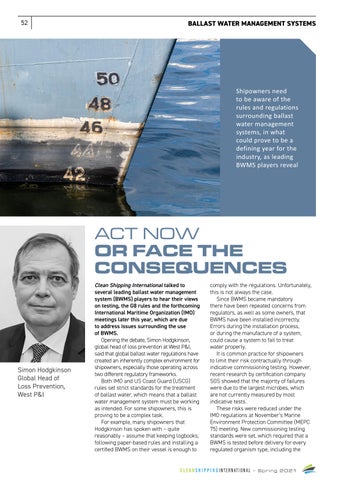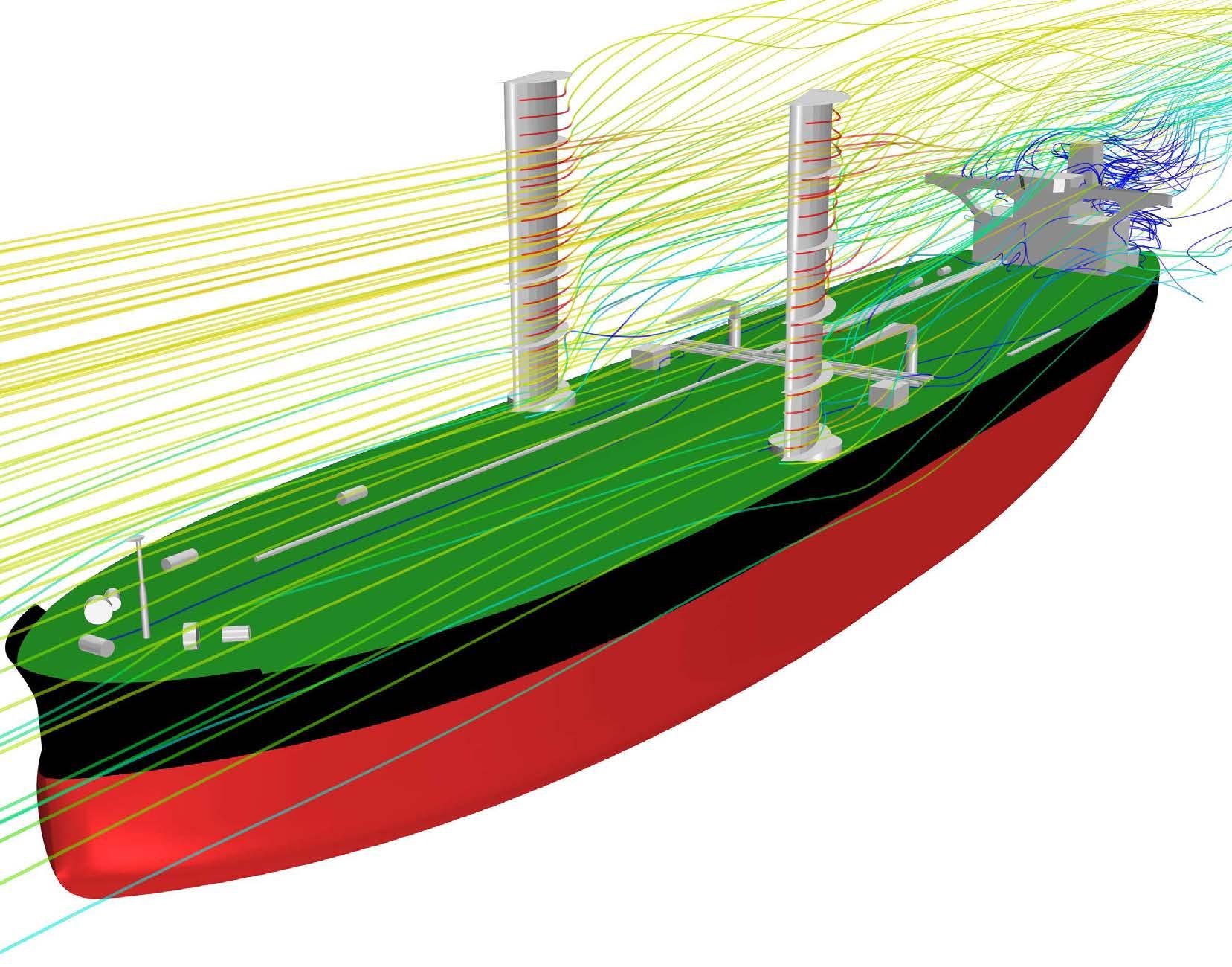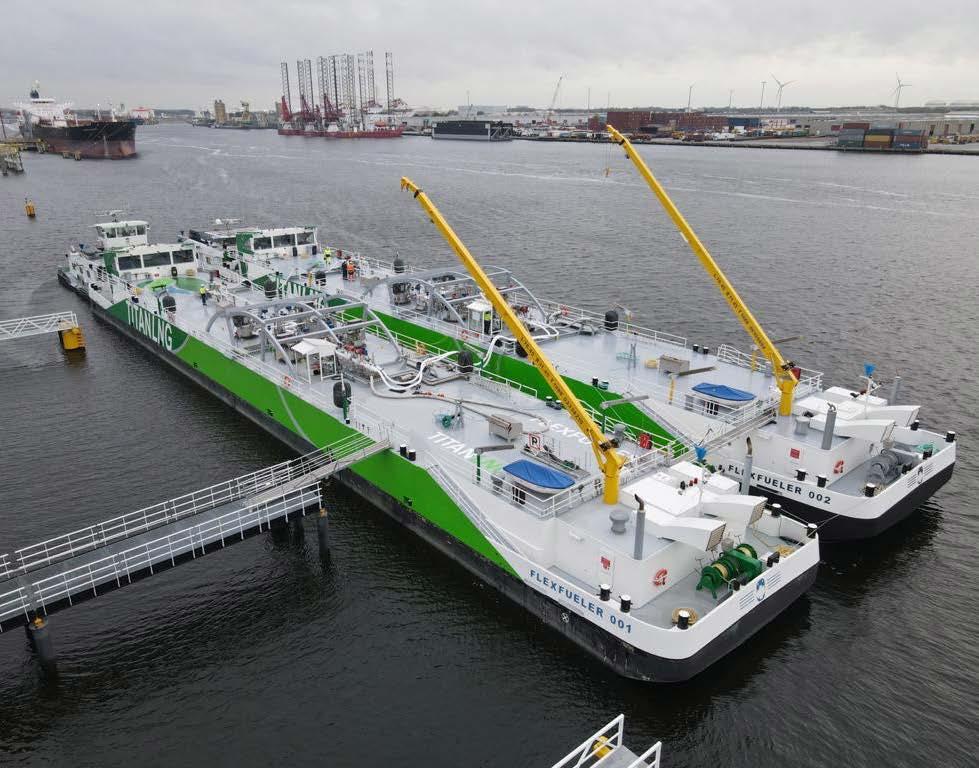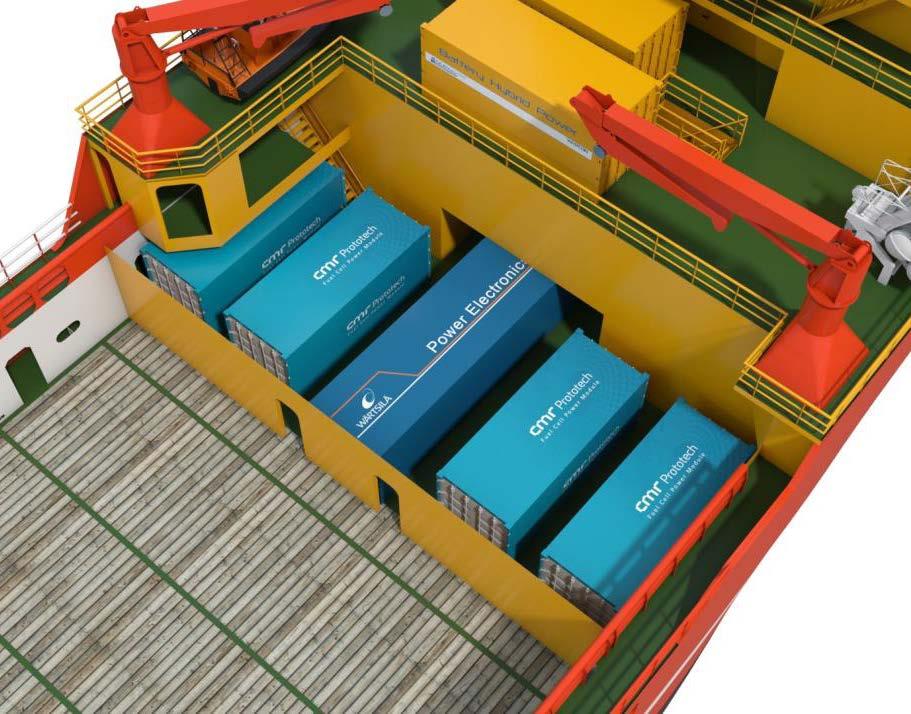52
BALLAST WATER MANAGEMENT SYSTEMS
Shipowners need to be aware of the rules and regulations surrounding ballast water management systems, in what could prove to be a defining year for the industry, as leading BWMS players reveal
ACT NOW OR FACE THE CONSEQUENCES
Simon Hodgkinson Global Head of Loss Prevention, West P&I
Clean Shipping International talked to several leading ballast water management system (BWMS) players to hear their views on testing, the G8 rules and the forthcoming International Maritime Organization (IMO) meetings later this year, which are due to address issues surrounding the use of BWMS. Opening the debate, Simon Hodgkinson, global head of loss prevention at West P&I, said that global ballast water regulations have created an inherently complex environment for shipowners, especially those operating across two different regulatory frameworks. Both IMO and US Coast Guard (USCG) rules set strict standards for the treatment of ballast water, which means that a ballast water management system must be working as intended. For some shipowners, this is proving to be a complex task. For example, many shipowners that Hodgkinson has spoken with – quite reasonably – assume that keeping logbooks, following paper-based rules and installing a certified BWMS on their vessel is enough to
comply with the regulations. Unfortunately, this is not always the case. Since BWMS became mandatory there have been repeated concerns from regulators, as well as some owners, that BWMS have been installed incorrectly. Errors during the installation process, or during the manufacture of a system, could cause a system to fail to treat water properly. It is common practice for shipowners to limit their risk contractually through indicative commissioning testing. However, recent research by certification company SGS showed that the majority of failures were due to the largest microbes, which are not currently measured by most indicative tests. These risks were reduced under the IMO regulations at November’s Marine Environment Protection Committee (MEPC 75) meeting. New commissioning testing standards were set, which required that a BWMS is tested before delivery for every regulated organism type, including the
C L E A N S H I P P I N G I N T E R N A T I O N A L – S p r i n g 2 0 21











